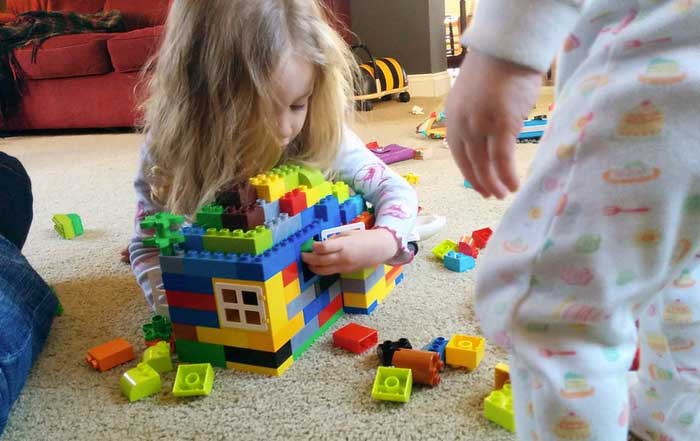Italy, a country renowned for its rich history, breathtaking landscapes, and artistic legacy, offers an unparalleled gastronomic experience that is deeply rooted in its diverse regional cultures. Beyond the bustling cities and popular tourist destinations lies a tapestry of quaint villages where culinary traditions have been preserved for generations. These villages not only captivate with their picturesque settings but also with flavors that tell stories of the land and its people.
The Allure of Italy's Villages
Nestled among rolling hills, along shimmering coastlines, and perched atop rugged mountains, Italy's villages are the heart and soul of the nation's cultural and culinary identity. These small communities, often overshadowed by Italy's major cities, offer a glimpse into a way of life that remains largely untouched by modernity. The narrow cobblestone streets, centuries-old stone houses, and communal squares serve as the backdrop for daily rituals that revolve around food and family.
The charm of these villages lies in their ability to maintain traditions in an ever-changing world. Locals take immense pride in their heritage, and this is vividly reflected in their culinary practices. Seasonal ingredients sourced from local farms, age-old recipes passed down through generations, and a communal approach to dining are hallmarks of village life.
Culinary Traditions Rooted in History
Italian cuisine is a mosaic of regional specialties, each influenced by the geography, climate, and history of its area. In the villages, this diversity is even more pronounced. The isolation of some communities over the centuries has led to the development of unique dishes that cannot be found elsewhere.
The emphasis on fresh, high-quality ingredients is a unifying thread throughout Italian cooking. In the villages, this principle is elevated to an art form. Markets brimming with just-picked produce, family-owned dairies producing artisanal cheeses, and vineyards cultivating indigenous grape varieties contribute to a culinary landscape that is both vibrant and authentic.
The Flavors of San Gimignano
A Medieval Masterpiece
Located in the heart of Tuscany, San Gimignano is often referred to as the "Medieval Manhattan" due to its impressive towers that punctuate the skyline. This UNESCO World Heritage site is more than just a visual spectacle; it is a hub of gastronomic delight. The village's well-preserved architecture provides a stunning backdrop for exploring its culinary offerings.
Signature Dishes
San Gimignano is famous for its saffron production, a tradition dating back to the 13th century. The precious spice infuses local dishes with a distinct flavor and golden hue. One must-try dish is "Risotto allo Zafferano," where creamy risotto is delicately flavored with saffron strands.
Another highlight is the "Vernaccia di San Gimignano," a white wine produced from the Vernaccia grape grown exclusively in the area. This wine boasts a crisp, dry profile with notes of citrus and almond, making it a perfect accompaniment to the region's cuisine.
Local Wineries
The surrounding countryside is dotted with vineyards and wineries that welcome visitors for tours and tastings. These establishments often remain family-owned, ensuring that traditional methods are upheld. Wine enthusiasts can explore cellars where oak barrels age the Vernaccia, and learn about the winemaking process from grape to glass.
The Delights of Alberobello
A Trulli Wonderland
In the southern region of Puglia lies Alberobello, renowned for its unique "trulli" houses—whitewashed stone huts with conical roofs. This architectural marvel creates a fairytale-like atmosphere that is both enchanting and historically significant. The trulli are not just dwellings but also home to eateries that serve traditional Apulian cuisine.
Unique Culinary Offerings
Alberobello's cuisine is characterized by simplicity and robust flavors. "Orecchiette con Cime di Rapa," a pasta dish featuring ear-shaped pasta with sautéed turnip tops, garlic, and chili, exemplifies the local palate. The region is also known for its bread, particularly "Pane di Altamura," a hearty loaf with a crispy crust and soft interior.
Olive oil is a staple ingredient, with Puglia being one of Italy's largest producers. The golden liquid is drizzled generously over dishes, enhancing flavors and providing a healthful element to the diet.
Italian Villages Culinary Quiz
The Gastronomy of Ravello
A Coastal Gem
Perched on the cliffs of the Amalfi Coast, Ravello offers stunning views of the Mediterranean Sea and a tranquil atmosphere away from the more crowded coastal towns. The village's terraced gardens and historic villas create an idyllic setting for indulging in the local cuisine.
Coastal Cuisine
Ravello's proximity to the sea heavily influences its culinary scene. Seafood is abundant, with dishes like "Spaghetti alle Vongole," featuring clams cooked in white wine and garlic, showcasing the freshness of the catch. Lemons from the Amalfi Coast are legendary, and "Delizia al Limone," a lemon sponge cake with lemon cream, is a dessert that encapsulates the essence of the region.
The village is also known for "Limoncello," a lemon liqueur served chilled as a digestif. Visitors can often tour lemon groves and see firsthand how this vibrant drink is produced.
The Role of Local Ingredients
Central to the culinary excellence of Italy's villages is the reliance on local, seasonal ingredients. Farmers and producers adhere to traditional methods, often eschewing modern agricultural practices in favor of organic and sustainable techniques. This commitment results in produce that is rich in flavor and nutrition.
In regions like Tuscany and Umbria, wild truffles are a prized ingredient. Truffle hunting is a time-honored tradition, and the fungi add an earthy depth to dishes like "Tagliatelle al Tartufo." Similarly, regions like Emilia-Romagna are famed for Parmigiano-Reggiano cheese and Prosciutto di Parma, products that carry Protected Designation of Origin (PDO) status, ensuring their authenticity and quality.
The Artisans Behind the Food
The culinary traditions of Italy's villages are sustained by the artisans and craftsmen who dedicate their lives to perfecting their products. From cheesemakers and butchers to bakers and vintners, these individuals are custodians of their heritage. Their expertise is often the result of knowledge passed down through family lines, and their passion is evident in the quality of their offerings.
Visiting these artisans provides insight into the meticulous processes involved in creating staple Italian foods. For example, observing the production of mozzarella di bufala in Campania reveals the precision and care required to achieve the cheese's distinctive texture and flavor.
Preserving Culinary Heritage
As globalization and modernization continue to influence even the most remote areas, there is a concerted effort within Italy's villages to preserve their culinary heritage. Initiatives such as agriturismos—farm stays that offer accommodation and meals—allow visitors to experience rural life and traditional cooking firsthand.
Organizations and movements like Slow Food, founded in Italy, promote the preservation of local food cultures and biodiversity. They work with communities to protect regional products and educate the public about the importance of sustainable practices.
The Fun of Italy
Embarking on a culinary journey through Italy's most charming villages is not merely a gastronomic endeavor but a cultural immersion. Each village, with its unique landscape and history, offers flavors that are a direct reflection of its identity. The commitment to tradition, the celebration of local ingredients, and the warmth of the communities create an experience that is both enriching and unforgettable.
For businesses in the hospitality and tourism industry, understanding and promoting these authentic experiences can lead to more sustainable and meaningful engagement with travelers. By highlighting the stories behind the food and the people who create it, there is an opportunity to foster deeper connections and appreciation for Italy's rich cultural tapestry.
Whether it's savoring saffron-infused dishes in San Gimignano, exploring the trulli of Alberobello while enjoying hearty Apulian fare, or indulging in the citrus delights of Ravello, Italy's villages beckon with the promise of discovery and delight. The culinary treasures found within these communities are a testament to the country's enduring legacy of excellence in food and hospitality.










